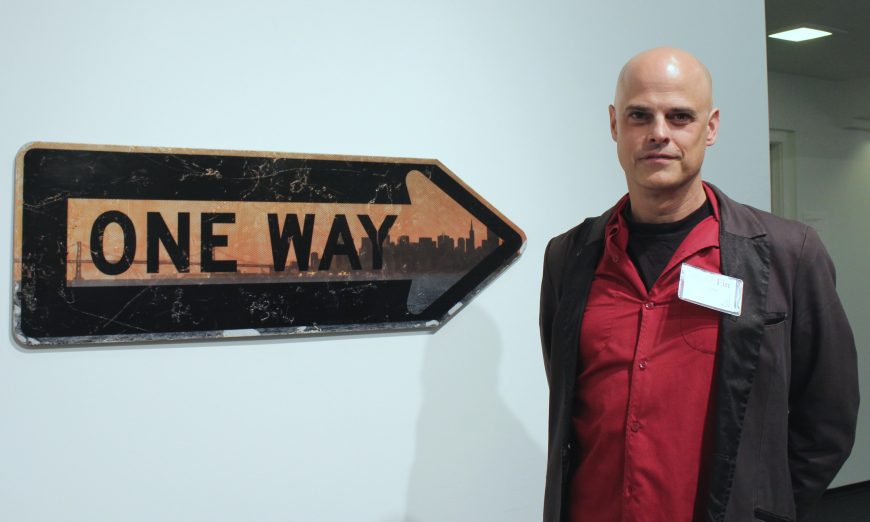At the de Saisset Museum’s Sept. 27 opening reception for its fall exhibits, guests might make a wish while viewing a watercolor of the “Dandelion,” part of “California Flora: Fanny McClatchy Richardson,” an exhibit showing native California wildflowers. In the exhibit, “She Sang Me a Good Luck Song: The California Indian Photographs of Dugan Aguilar,” are images of Native Americans from varied walks of life.
The third exhibit that opened on Sept. 27 was “Radical Velocity: The Power of the Body to Move through Place.” This exhibit, with about 50 works, examines how people can use their bodies to influence change.
“It’s really looking at performance, protest and physicality to see how movement and the presence of the human body can impact the spaces of our daily lives,” said Lauren Baines, Assistant Director of the de Saisset Museum. “What does it mean to protest? To occupy space? To move through space in unexpected ways?”
“Radical Velocity” features the work of photographer Robert Schultze, who displayed three black and white images of people from his collection, “Portraits of the 99%.” According to Schultze, in 2011, he traveled to a number of cities and took about 10,000 images of Occupy Movement activists. From this set, he chose about 2,000-3,000 images for the collection.
“The whole idea is to find the diversity of the people all behind one idea,” Schultze said. “The Occupy Wall Street protesters are not radical, poor or wealthy. They’re just normal people who want to make a difference. It was interesting to see such a social movement like this that is the same throughout the country. The main thing I wanted to show was that these people are real people, not just outcasts. These people were all at the camps. I set up a white backdrop and [I took pictures] in the shade with a silver reflector.”
Also at “Radical Velocity” is photographer and artist Scott Fin’s photo transfers of “Sunrise SF Skyline and Bay Bridge” on a One Way sign, and “Sunrise Under Golden Gate” on a Stop sign — both works were created this year.
“My signs fit into this exhibit because they’re commands and orders. Stop. One way. We’re confronted with these directions everyday all the time,” Fin said. “If you think about the signs, they can be arresting. They can stop you in your tracks. But we don’t think about them because they’re everywhere. We’re so used to them. I saw these signs behind a San Francisco warehouse on a pile, like trash. I thought a really cool way of reusing these trash signs would be to figure out how to print photos on them. When I got the signs, they were filthy because they’d been sitting in a pile for 20 years. Signs are tough. So I get them and remove the hardware and then I wash the signs and sand them lightly and clean them with rubbing alcohol to prepare them for the image transfers.”
The de Saisset Museum is on the Santa Clara University campus, adjacent to the Mission Church. Visit scu.edu/desaisset for details about the duration of the exhibits, museum hours and directions.






